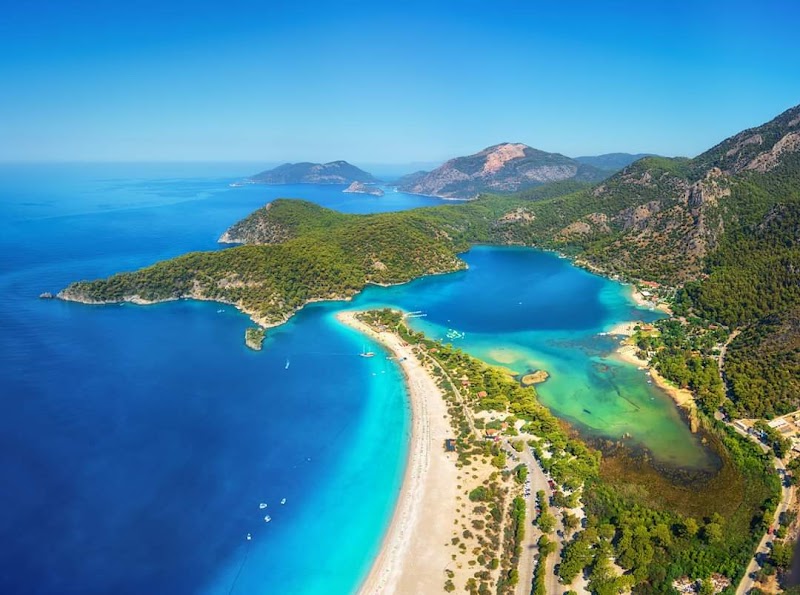
Exploring Coast Biodiversity Awareness Week: An Outdoor Adventure in Kwale, Kenya
Coast Biodiversity Awareness Week in Kwale offers a rewarding trek through lush forests and vibrant coastal ecosystems. This event combines nature discovery with practical adventure, perfect for both casual hikers and seasoned explorers eager to connect with Kenya’s unique coastal biodiversity.
Start Early to Beat the Heat
Begin your hike before 9 a.m. to avoid the midday coastal humidity and catch active wildlife during cooler hours.
Hydrate Generously
Carry at least two liters of water; the combination of humidity and physical exertion can quickly dehydrate you.
Wear Supportive Footwear
Traction matters on mixed terrain of packed earth, sand, and rocks—opt for durable hiking shoes with good grip.
Guide Up for Local Insight
Engage a local guide during the week for richer understanding of Kwale’s biodiversity and conservation stories.
Exploring Coast Biodiversity Awareness Week: An Outdoor Adventure in Kwale, Kenya
Coast Biodiversity Awareness Week in Kwale offers adventurers a unique opportunity to engage with one of Kenya's most biologically rich regions. This week-long event invites hikers and nature enthusiasts to explore the diverse ecosystems of Kwale County, where coastal forests meet mangrove swamps and coral-rich shores. The primary trek covers approximately 12 kilometers with a moderate elevation gain of around 350 meters, winding through forest trails, river crossings, and open grasslands that reveal sweeping ocean views.
The trail pulses with life—massive baobabs seem to lean in with curiosity, while mangrove roots grab the muddy shores, daring you to cross their tangled networks. Early mornings are best for bird watching as kingfishers flash bright blues and bee-eaters hum overhead, each species fiercely alive in its element. Midday brings heat and humidity, challenging hikers to stay hydrated and pace themselves.
The terrain is a mix of packed earth, occasional rocky patches, and soft coastal sand, requiring sturdy hiking shoes with good grip. You’ll navigate through shaded forests where undergrowth rustles with unseen creatures, moving into open coastal flats where the Indian Ocean's salty breeze pushes forward, clearing the mind.
Timing your hike is crucial. Arrive before 9 a.m. to avoid midday sun and catch the trail at its liveliest. Proper hydration is a must; bring at least two liters of water, along with light, moisture-wicking clothing. Guided tours during Biodiversity Awareness Week provide local experts who enrich the experience with knowledge about Kwale’s unique plants, wildlife, and conservation efforts.
More than just a walk, this trail is a respectful dance with wild spaces fiercely themselves. The rivers you cross don’t simply flow; they challenge your steps with unpredictable currents. The coastal winds demand attentive footing. This is a hands-on lesson in observing and adapting to nature’s rhythms.
Whether you’re a casual hiker or an experienced adventurer, Coast Biodiversity Awareness Week in Kwale delivers a balanced mix of discovery, challenge, and education. It’s a chance to deepen connection with Kenya’s coastal biodiversity and contribute to its ongoing preservation.
Before setting out, remember essentials: start early, pack sensible gear, and prepare for humidity. Your reward is a landscape alive and urgent, offering glimpses of rare species and ecosystems that thrive right at the meeting point of land and sea.
Nearby Trips
All Adventures
Boat Charters
Water Activities
Adventures near Kwale, Coast Province
Discover the unique and memorable adventures that make Kwale, Coast Province special.
Frequently Asked Questions
What unique wildlife can I expect during Coast Biodiversity Awareness Week?
Visitors often see African fish eagles, mangrove kingfishers, and various butterfly species. Along the coastal edges, monitor lizards and countless crab species interact dynamically with the environment.
Are there any lesser-known viewpoints along the trail?
Yes, a ridge near the 7-kilometer mark offers unobstructed views of the Msambweni Bay—a prime spot often missed but perfect for panoramic photography.
How steep is the elevation gain on the main trails?
The hike features a moderate elevation gain of approximately 350 meters, with gradual inclines rather than steep climbs, suitable for hikers with average fitness.
Is it safe to hike solo during the event?
While solo hiking is possible, a local guide is strongly recommended for safety, navigation, and enriching understanding of the area's ecology.
Are there cultural experiences linked to the Biodiversity Awareness Week?
Yes, the event integrates visits to local Duruma and Digo communities who share traditional knowledge about native plants and sustainable resource use.
How is conservation addressed during the week?
The event promotes responsible trekking, emphasizing 'leave no trace' principles, and provides hands-on workshops about mangrove restoration and marine life protection.
Recommended Gear
Sturdy Hiking Shoes
Grip and foot support for varied terrain, including forest trails and sandy stretches.
Water Bottle or Hydration Pack
To maintain hydration amid humid coastal conditions.
Lightweight Rain Jacket
Protects against unexpected showers common during transitional seasons.
Wide-Brimmed Hat
Shields face and neck from strong sun during midday stretches.
Local Insights
Hidden Gems
- "Msambweni Bay Ridge viewpoint"
- "Kasha River Mangrove patches"
- "Local community botanical garden"
Wildlife
- "Mangrove kingfishers"
- "African fish eagles"
- "Monitor lizards"
- "Crab populations"
History
"Kwale County has deep roots with the Duruma and Digo peoples, whose traditional ecological knowledge shapes local conservation efforts and cultural festivals during the Awareness Week."
